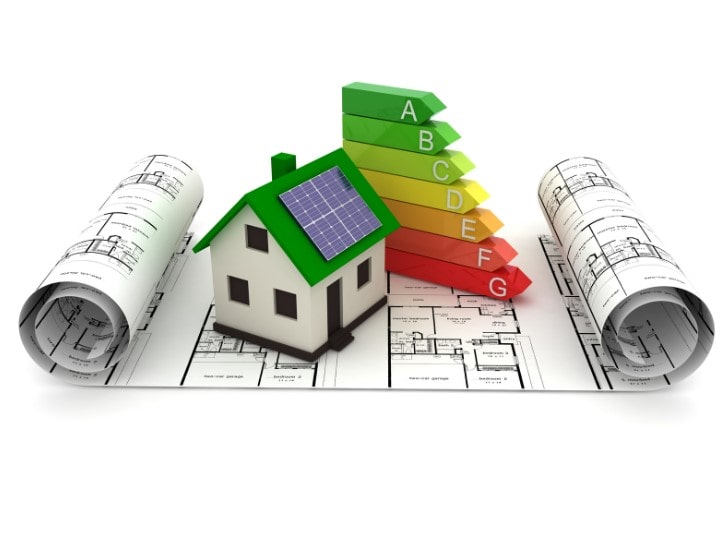
How To Improve The Energy Efficiency Of New Build Projects
Energy efficiency should be a top priority when constructing new residential buildings, in order to reduce construction costs and environmental impact – and to create an affordable and comfortable living environment for end-users. Here are some key efficiency strategies to implement when undertaking new residential development projects.
.png?width=400&height=200&name=BOOK%20A%20CONSULTATION%20-%20DS%20Squared%20(1).png)
1. Reduce Your Heating Requirements
Optimising the building layout and insulation architecture reduces the energy required for heating and cooling. Compact floorplans with small, well-insulated spaces are the most efficient design for residential newbuilds. However, energy-conscious open plan designs can also reduce the area needing climate control and are an attractive feature much sought out by homeowners. High-performance insulation in all your external walls, roofs, and floors creates an effective thermal envelope that will improve the overall energy efficiency of the building.
2. Use Efficient Heating Systems
Conventional gas-fed boilers are less efficient than renewable energy systems like air source heat pumps, so a growing number of new build developments are specifying air source or ground source heat pumps into the building’s framework at the design stage. Correctly sized heat pumps use electricity to extract latent heat from the air to warm the interior spaces, providing heating and cooling more efficiently than boilers and emitting less carbon.
3. Install Effective Insulation
All new build homes must now demonstrate an extensive level of loft and wall insulation. However, quality insulation is pointless if thermal bridges and gaps allow heat transfer and draughts. Expanding foam and sealant should thoroughly seal any gaps around your windows, doors, voids, pipes, and wiring penetrations. Professional draught-proofing on any chimneys, vents, and other openings also makes a big difference in comfort and energy savings for end-users.
4. Specify Energy Efficient Windows
Windows and doors can lead to substantial heat loss for homeowners, even if other parts of the home are optimised for energy-efficiency. To counteract this, property developers can specify double or triple-glazed units with low-emissivity coatings at the design stage, which reflect heat back inside and reduce heat transfer through the glazing. Well-insulated uPVC frames also limit heat conduction better than metal frames.
5. Generate Renewable Energy
Incorporating renewable energy sources into your new build homes allows homeowners to generate some of their own power, reducing their long-term energy expenditure and potentially increasing the desirability and price of the properties. Solar PV is ideal for residential roofs facing east or west. Micro wind turbines can also be effective emplacements that receive consistent wind and have a large enough garden, though site-specific conditions apply.
6. Choose Energy Efficient Fittings
Lighting and appliances significantly influence the energy consumption of a property. The choice of appliances and their efficiency rating is largely the choice of the people who buy your homes. However, LED lighting can be incorporated into each property during the build and consumes a fraction of the electricity of conventional bulbs. In-built smart heating controls and sensors also help property owners reduce waste by managing systems more effectively.
7. Optimise Your Building Management Systems
Sophisticated building management systems optimise your heating, cooling, ventilation, and lighting based on building usage and conditions. Properly calibrated, they avoid energy waste from unoccupied spaces or equipment running for hours, and also provide data to inform further efficiency improvements.
8. Eliminate Your Standby Power Usage
Many devices still draw standby power when switched off. Specifying smart plugs into your architectural plans gives end users better control over their standby power usage, further improving energy efficiency.
Improve Energy Efficiency To Improve Sustainability And Profitability
Taking a holistic approach and incorporating multiple energy efficiency measures into your builds can significantly reduce energy demand and costs over the property's lifetime. This makes efficient buildings highly appealing to potential buyers and tenants, adding value to your developments.
The smaller carbon footprint also supports sustainability goals and helps address climate change, which is becoming increasingly crucial for regulators and consumers. Most importantly, occupants enjoy a healthier and more comfortable indoor environment through draught-proofing, high-performance glazing, stable temperatures, and quality lighting. To find out more about energy efficient and ecologically sustainable architecture, please contact DS Squared Architects today.
.png)
Image Source: Canva

